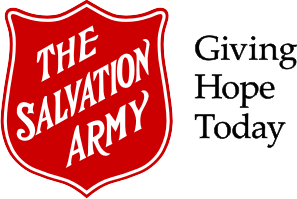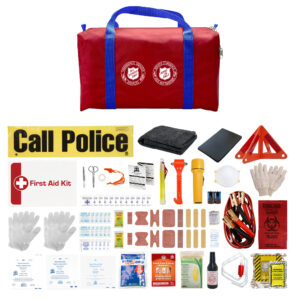The Salvation Army serves on numerous preparedness committees including Public Safety Canada’s Multi-Stakeholder Planning Group for Emergency Preparedness Week. Each year during Emergency Preparedness Week, The Salvation Army encourages Canadians to prepare for potential hazards and provides practical advice about actions that can help individuals and families be less vulnerable.
Visit the Government of Canada’s Get Prepared site for information on how you and your family can be better prepared.
Training
The Salvation Army utilizes volunteers in every aspect of Emergency Disaster Services. Full training is provided through the National Disaster Training Program (NDTP), a very detailed emergency response training program whereby personnel are trained in every aspect of Salvation Army emergency response. Only pre-trained, pre-registered personnel are called on during an emergency or disaster response.
Core training courses include:
Introduction to Emergency Disaster Services
The gateway course to The Salvation Army’s disaster training program, Introduction to Emergency Disaster Services, is required for all disaster workers. The course offers an overview of The Salvation Army’s mission, the services it provides during a disaster, and prepares participants for their first disaster assignment, describing everything from packing to travel to self-care. This course is a prerequisite for all other Salvation Army disaster training courses.
Foundations of Emotional & Spiritual Care
This course provides an introduction to Emotional & Spiritual Care (ESC). It provides a basic overview for all active volunteers who need to understand what ESC is all about and as an entrée to the Advanced Emotional & Spiritual Care course, especially for those who are not sure if ESC is really what they are interested in doing.
Disaster Food Service & Canteen Operations
During a disaster, the first gesture of comfort The Salvation Army offers is often a cold drink and a hot meal from one of its mobile feeding units. The Disaster Food Service & Canteen Operations course is designed as the starting point for any disaster worker who wishes to be a part of disaster food service operations. Participants who complete the course will learn about the different types of Salvation Army food service equipment, the essentials of building a food service team, canteen operations and maintenance, and the basics of menu planning.
Know the Risks
Many people think that Canada is free from many of the risks faced by other countries. The first step is to identify the risks. Risk identification is the process of finding, recognizing, and recording risks. The objective of risk identification is to identify key risks that have significant impact on Canada and/or Canadians.
The following are examples of known risks in Canada. Flooding, especially during the Spring, is a risk in many parts of the country as you can see from this map. If you are in an area that is known as a flood risk, there are thing you can do to prepare. Visit Flood Smart Canada for more information.
Another area of risk in Canada is the risk of earthquakes. In some areas, this also has the added risk of a tsunami, which can be triggered by the earthquake. You find information on this hazard by visiting Earthquakes Canada.
Make an Emergency Plan
Another critical step in preparing to be ready for anything is to make a plan for you and your entire household. Information required includes identifying exits, meeting places and evacuation routes. It also includes having copies of important documents like identification for everyone in the household, including children, pets and people with special care needs. It is also important to include health information, including medications and medical equipment. Keeping important phone numbers in one place and identifying an out-of-town contact that everyone in the household is aware of will make family reunification easier.
Templates are available at Get Prepared.
Disasters or other traumatic events can be very challenging and present multiple sources of stress. Taking care of yourself is critical for you and your family to stay well and to face the situation with calm.
A self-care plan will provide tips to help you:
‐ Know your emotional and spiritual needs.
‐ Have a self-care plan.
‐ Make your self-care kit.
Templates for a self care preparedness guide are available here:
Get a 72-Hour Kit
The final step to be ready for anything is to make or buy and emergency preparedness kit. Experts suggest you have everything you need in order to be self-sufficient for at least 72 hours following a significant incident. This self-sufficiency includes planning to be without critical infrastructures such as utilities and water. Disaster and emergency management professionals, especially throughout North America, promote the idea that individuals and households need to prepare for three full days. It may take this long before emergency responders can reach certain areas for rescue and response operations or for administrators to organize their response.
You may have some of the items already, such as food, water and a battery-operated or crank flashlight. The key is to make sure they are organized and easy to find. Would you be able to find your flashlight in the dark?
Make sure your kit is easy to carry and everyone in the household knows where it is. Keep it in a backpack, duffle bag or suitcase with wheels, in an easy-to-reach, accessible place, such as your front-hall closet. If you have many people in your household, your emergency kit could get heavy. It’s a good idea to separate some of these supplies in backpacks. That way, your kit will be more portable and each person can personalize his or her own grab-and-go emergency kit.
Another option, if you want to put together your own kit, is to visit your local Salvation Army thrift store.


